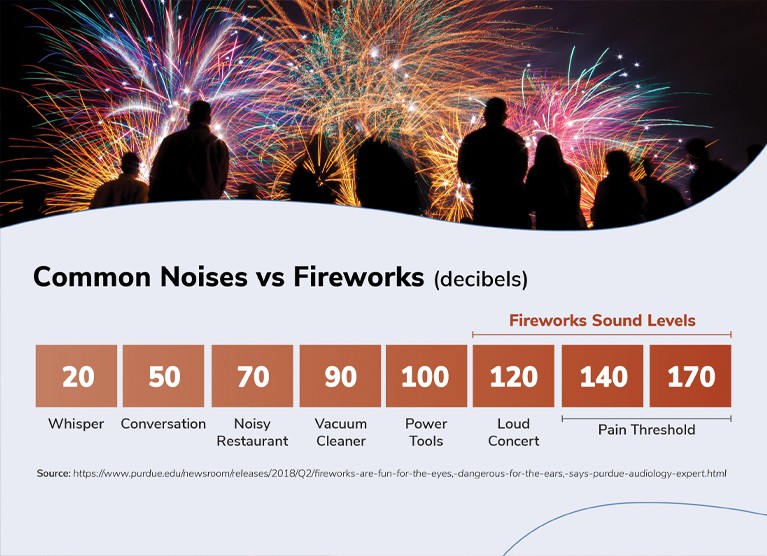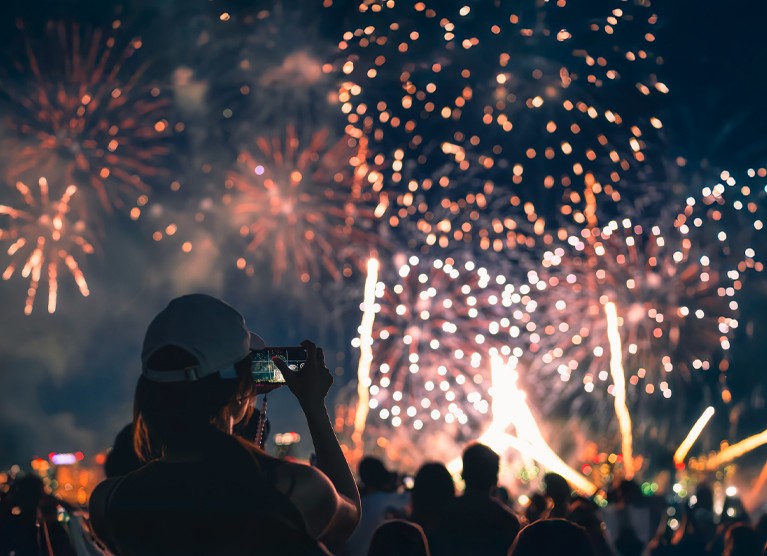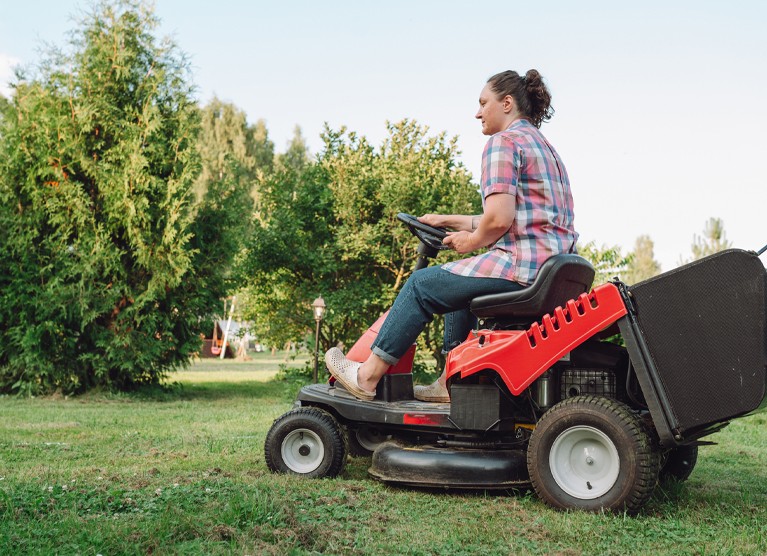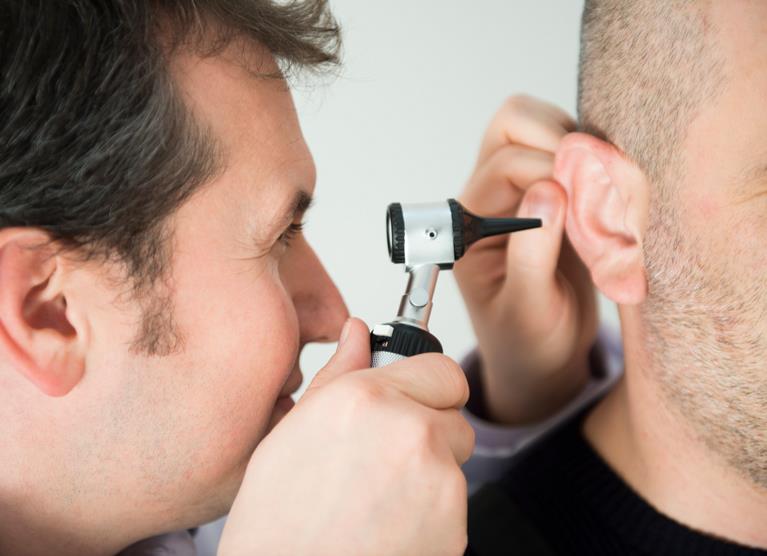Protect Your Ears This July 4: Fireworks and the Risk of Hearing Loss
Fireworks are a dazzling part of America’s Independence Day celebration. The bright colors, the booming echoes, the joy they bring—it’s easy to get swept up in the spectacle. But behind the sparkle is a hidden danger: noise-induced hearing loss (NIHL).
Every year, thousands of people gather at parks, fairgrounds, backyards, and beaches to watch fireworks shows—but few realize these vibrant explosions can reach sound levels that are dangerously high. In fact, one loud burst could cause permanent damage to your hearing in just seconds.
Let’s discuss the risks fireworks pose to your hearing and, more importantly, how to enjoy the holiday while keeping your ears safe.
Understanding Noise-Induced Hearing Loss
Noise-induced hearing loss occurs when the sensitive structures in your inner ear (specifically the hair cells in the cochlea) are damaged by loud sound. These hair cells help convert sound waves into electrical signals that your brain interprets as sound. Unlike other parts of your body, these hair cells don’t regenerate. Once they’re damaged or destroyed, the hearing loss is irreversible.
Loud noises can damage hearing in two ways:
- Sudden exposure to extremely loud sounds, like explosions or gunfire.
- Prolonged exposure to moderately loud noises, such as music, lawn equipment, or heavy traffic.

How Loud Are Fireworks?
Sound is measured in decibels (dB). According to the NIH , exposure to sounds above 70 dB for prolonged periods may start to damage hearing. At 85 dB, damage can occur in as little as two hours. At 100 dB, it can happen in 15 minutes or less.
Fireworks can produce sound levels of:
- 150 to 170 dB at the source (especially for professional displays)
- 120 to 155 dB for consumer fireworks, depending on distance
To put that in context:
- Whisper: 20 dB
- Conversation: 60 dB
- Noisy restaurant: 70 dB
- Vacuum cleaner: 90 dB
- Power tools: 100 dB
- Loud concert: 120 dB
- Firecrackers/fireworks (close range): 120–170 dB
Even one close-range explosion can cause immediate and permanent damage. This is especially risky for children, whose ear canals are smaller and more susceptible to damage from loud sounds.
Why Fireworks Pose a Unique Risk
Fireworks aren’t just loud—they’re sudden. This combination makes them particularly dangerous to hearing. Your ears have a natural reflex (called the stapedius reflex) that can dampen the impact of loud sounds—but it takes time to activate. Fireworks don’t give your ears that time. By the time you hear the “boom,” it’s already too late to react.
Other risk factors include:
- Proximity: Standing too close significantly increases exposure.
- Duration: Attending long fireworks shows or lighting off several rounds increases cumulative exposure.
- Repeated exposure: Year after year, exposure builds and compounds the damage.
- Lack of protection: Most people don’t wear hearing protection during fireworks displays.

Signs of Hearing Damage to Watch For
After a loud event, it’s common to experience temporary changes in hearing, like:
- Ringing in the ears (tinnitus)
- Muffled or distorted hearing
- Ear discomfort or pressure
These symptoms may resolve in hours or days—but they’re a red flag. Even temporary hearing loss is a warning sign that your ears have been overstressed. Continued exposure without protection can lead to permanent hearing damage.
How to Protect Your Hearing During Fireworks
You don’t have to give up fireworks shows to protect your hearing—you just need to take a few precautions:
1. Keep Your Distance
- Stand at least 500 feet away from launch sites.
- The further you are, the more the sound dissipates before it reaches your ears.
2. Wear Hearing Protection
- Foam earplugs can reduce sound by 20–30 dB, which may be enough to bring dangerous sounds into a safer range.
- For children, use well-fitted earmuffs, which are easier to use and more reliable than earplugs.
- Bring extra ear protection for guests and family members—it’s an easy way to show you care.
3. Protect Young Ears
- Children are particularly vulnerable. Always provide proper hearing protection and consider watching fireworks from even further away or from inside a vehicle with the windows up.
- For babies and toddlers, look for noise-reducing earmuffs designed specifically for their age group.
4. Don’t Light Them Yourself
- Consumer fireworks are often used at unsafe distances or without proper safety measures.
- Lighting fireworks in close quarters, like neighborhoods or driveways, dramatically increases the risk of both physical injury and hearing damage.
5. Download a Decibel Meter App
- Several smartphone apps, including this one from the CDC , can measure real-time sound levels. If the environment exceeds 85–90 dB, it’s time to use protection or move away.

Fireworks Aren’t the Only Culprit
While we’re focusing on fireworks, remember that July 4 also comes with other noise risks:
- Parades (marching bands, sirens)
- Concerts or outdoor music festivals
- Lawn equipment (prepping the yard for BBQs)
- Boating or motorized watercraft
Each of these can push sound levels into dangerous territory. Consistent hearing protection is the best defense against NIHL.

What to Do If You Notice Changes in Your Hearing
If you or a loved one experiences hearing changes after fireworks, don’t brush it off. Schedule a hearing evaluation with a hearing care professional as soon as possible. Early detection is key to managing hearing loss and protecting the hearing you have left.
At Beltone, we offer free hearing screenings and personalized hearing care solutions. Our team is here to help you enjoy life’s special moments—without sacrificing your hearing.
Final Thoughts: Let Freedom Ring—Not Your Ears
July 4 should be a celebration of freedom, family, and fun—not a cause of lifelong hearing damage. With just a few simple steps—like keeping your distance, wearing ear protection, and staying alert—you can enjoy the spectacle of fireworks safely.
So go ahead. Watch the skies light up. Feel the magic. Just make sure to protect your hearing, so you can keep enjoying the sounds of celebration for years to come.

Online Hearing Test

Book Your Free Appointment

Reviewed By
Kathy McGowan, AuD CCC-A, Doctor of Audiology
Kathy McGowan is the Manager of Managed Care Programs with Beltone Corporation . Kathy worked with the Professional Development Training Team as well as the Operations Team and Beltone Corporate Retail for 8 years before being promoted to her current position. Prior to joining Beltone Corporate, Kathy worked for 10 years as an Audiology Manager in a private practice. She has worked in many settings as an Audiologist including an ENT practice, a hospital, an Optical and Hearing Company, and in the Military, retiring as a LtCol. Kathy earned her Bachelor’s in Speech and Hearing and Master’s in Audiology from Ohio University in Athens, Ohio, and went on to receive her Audiology Doctorate from A.T. Still University School of Health Sciences. Kathy is currently licensed in seven states.

